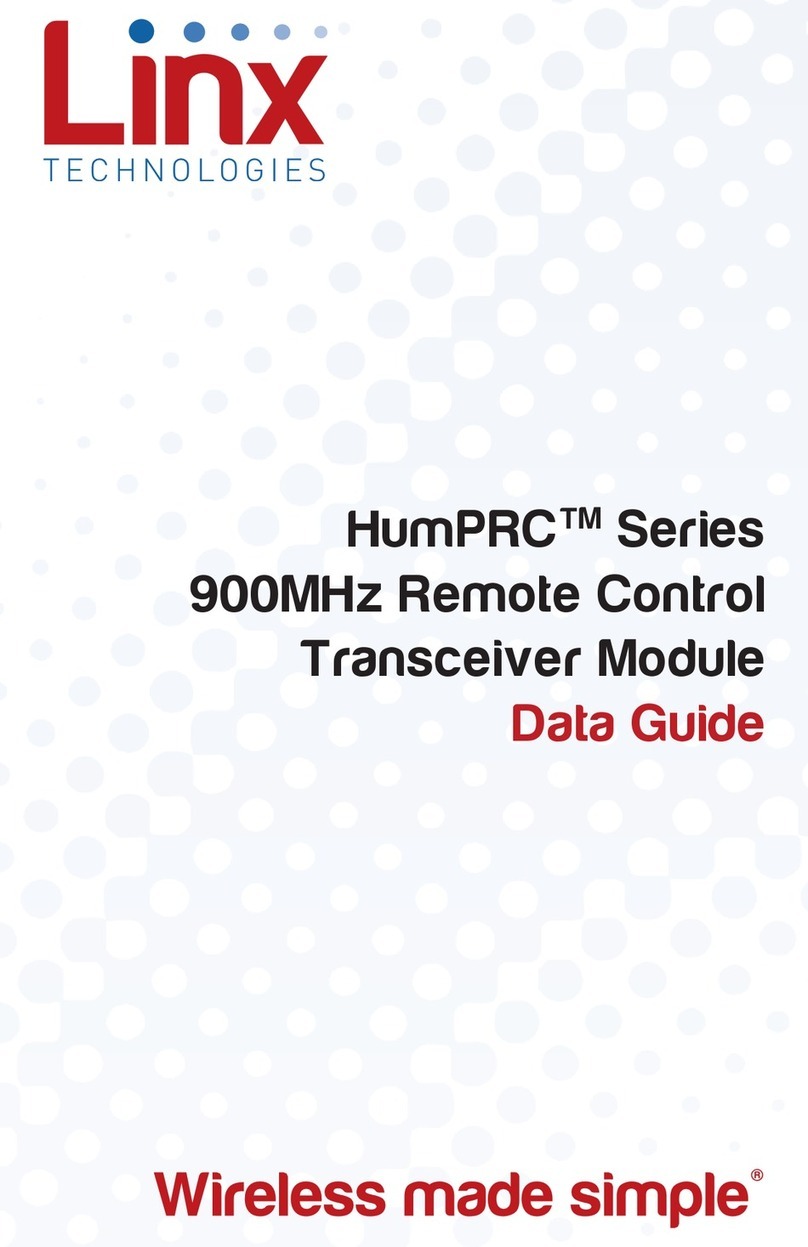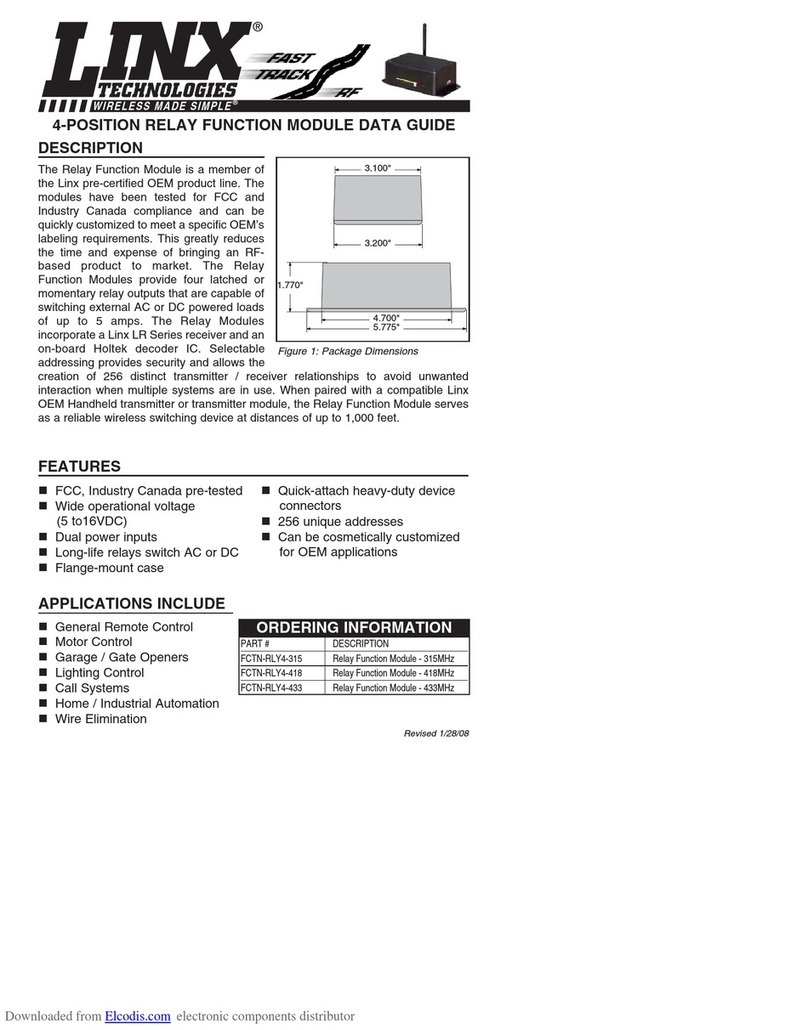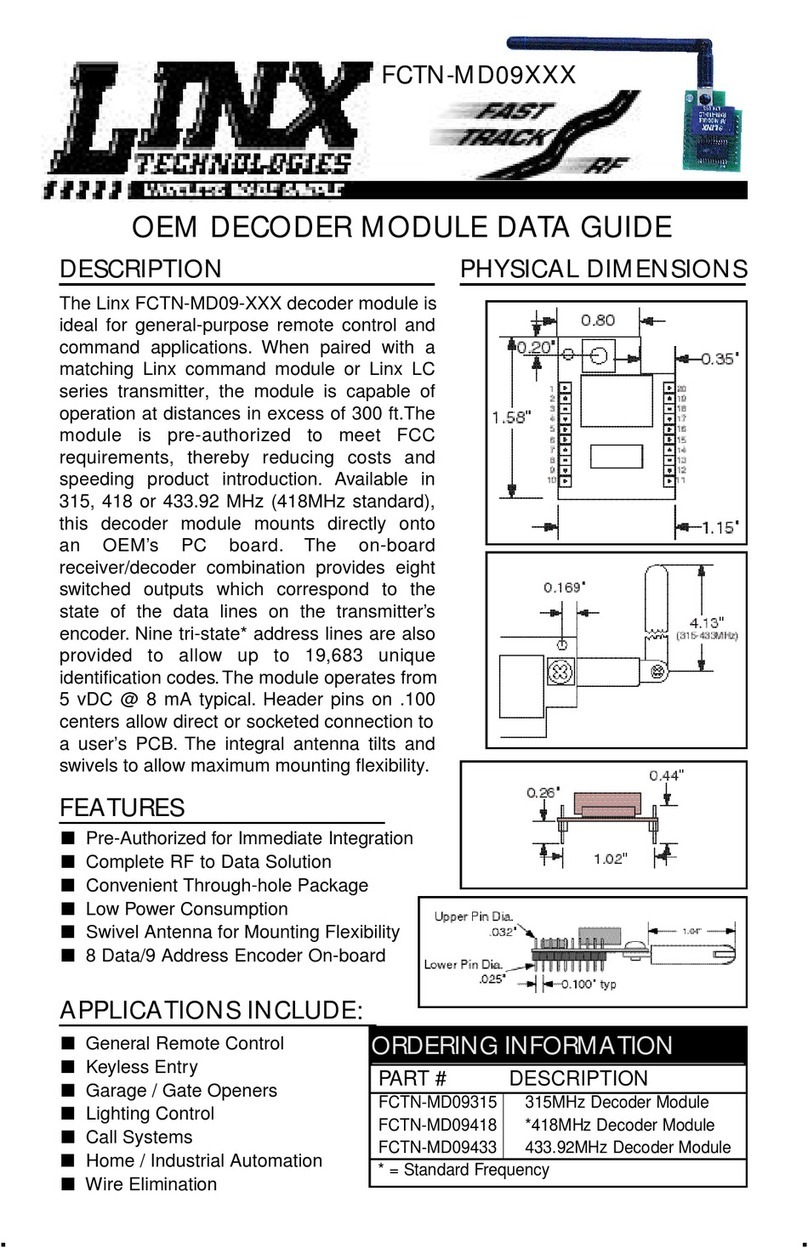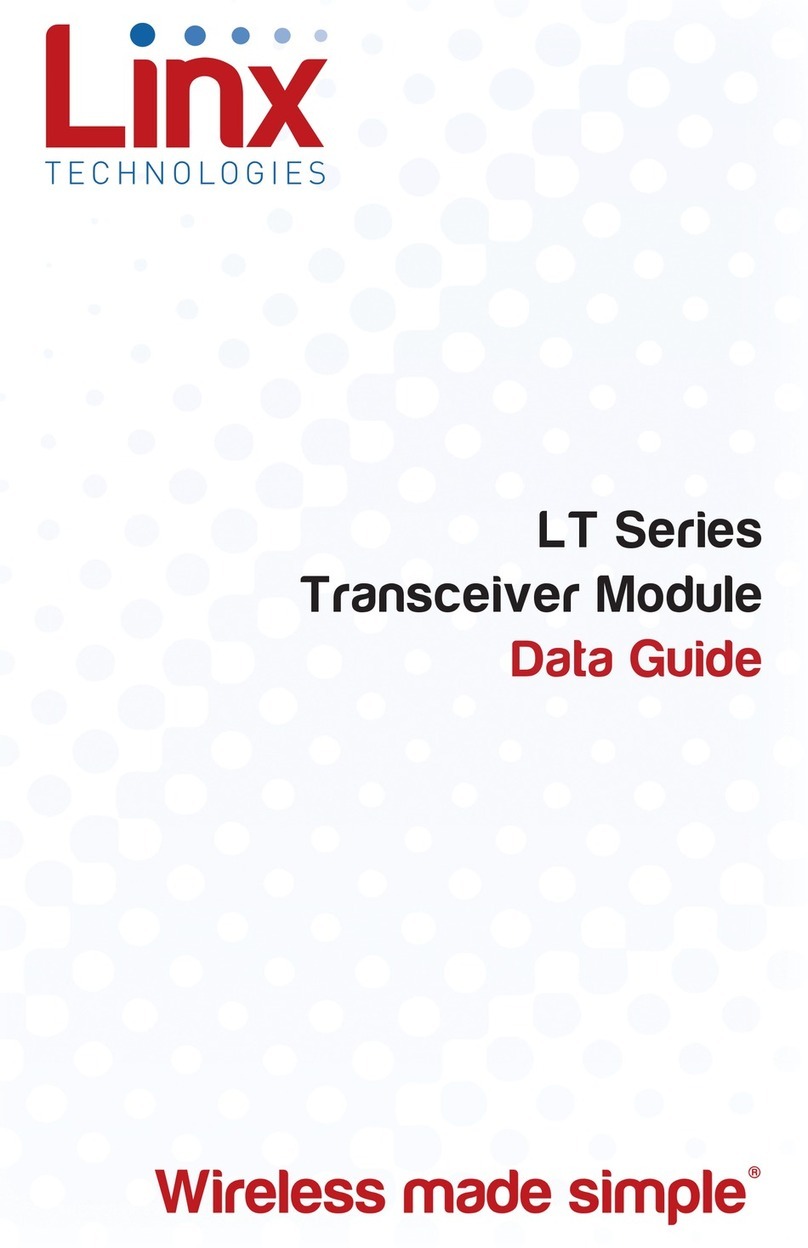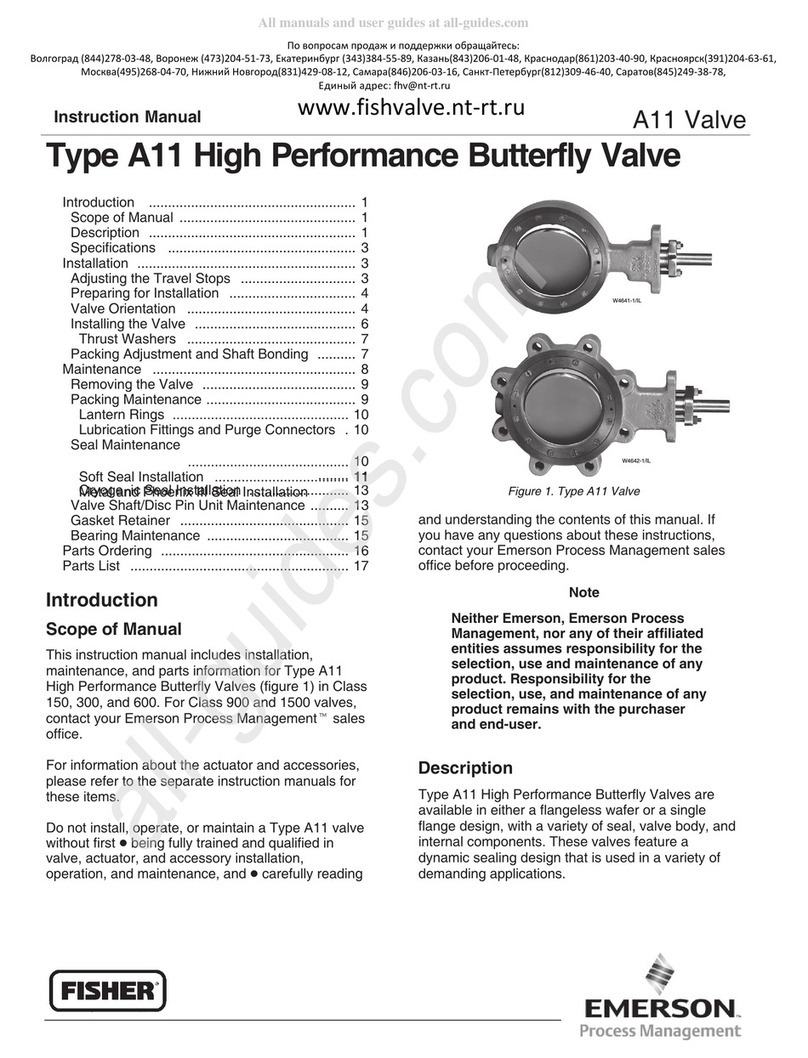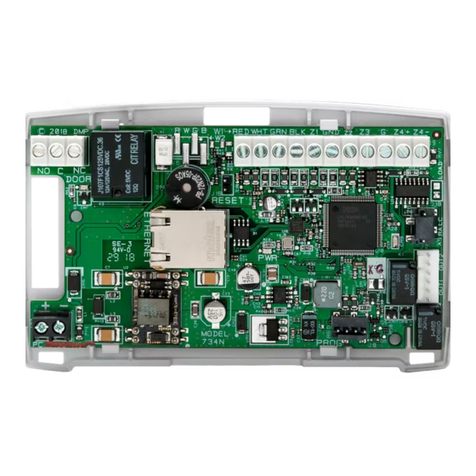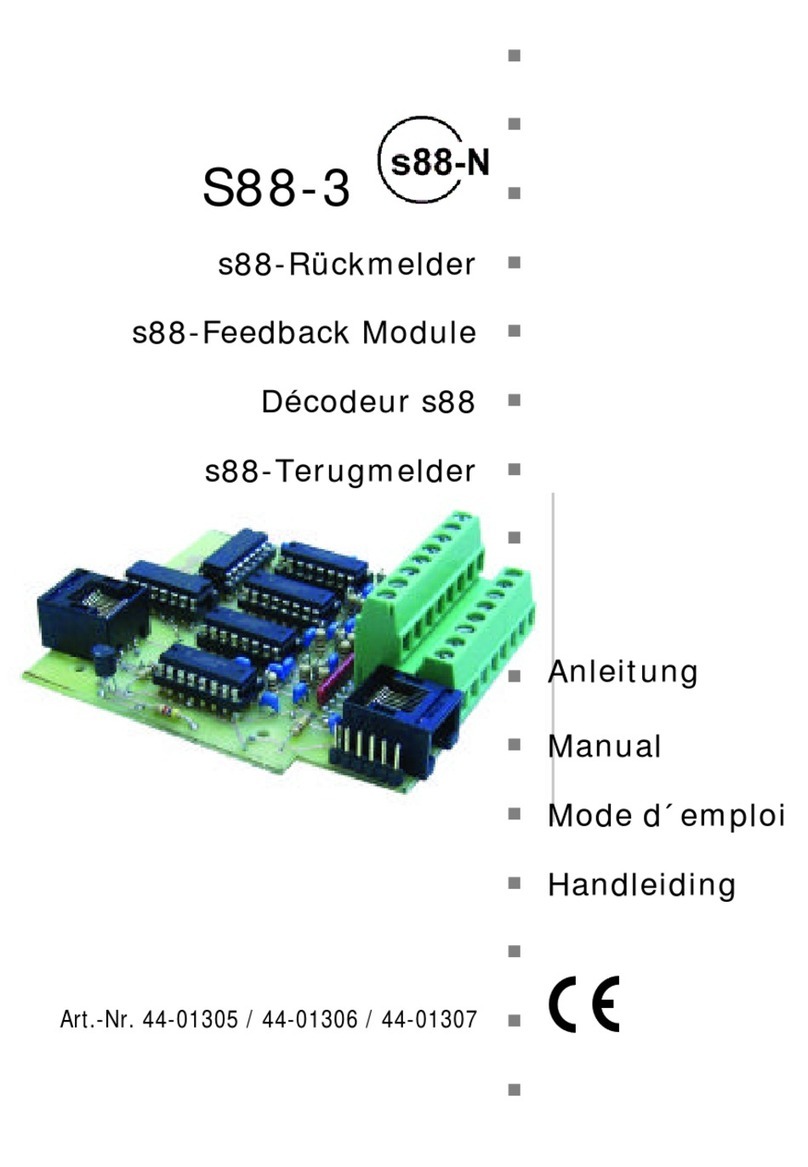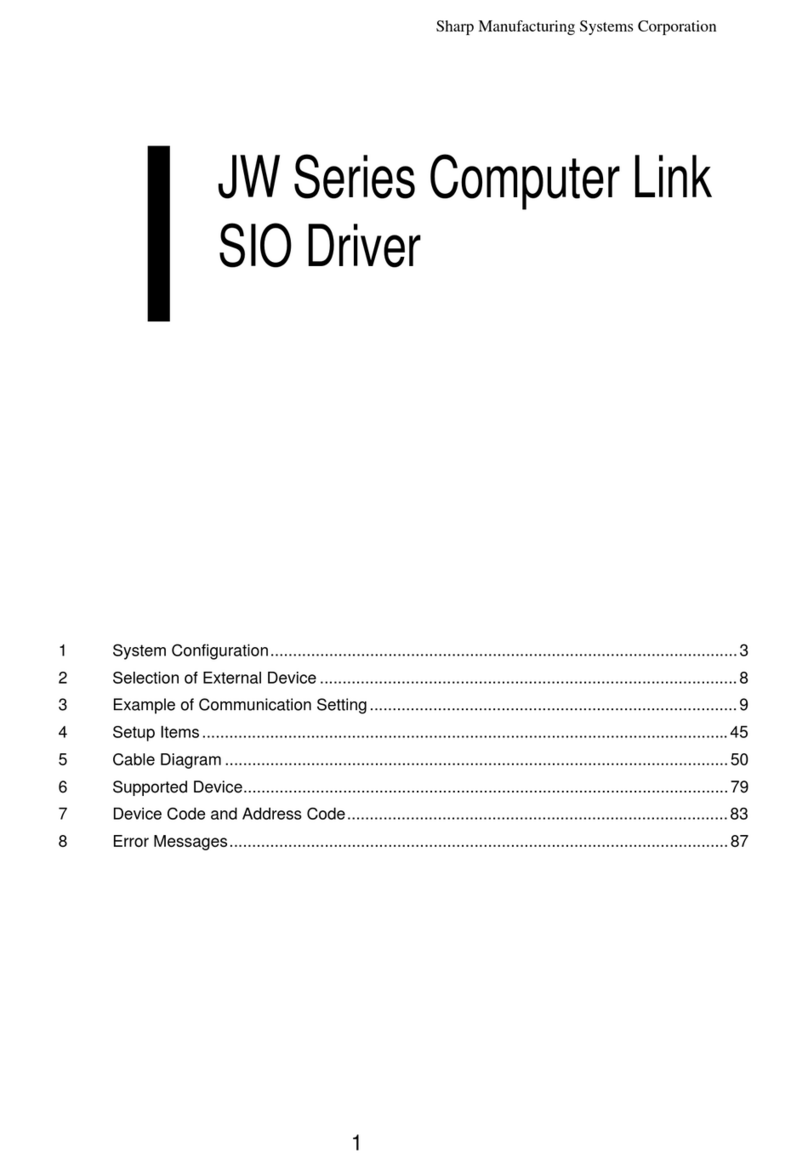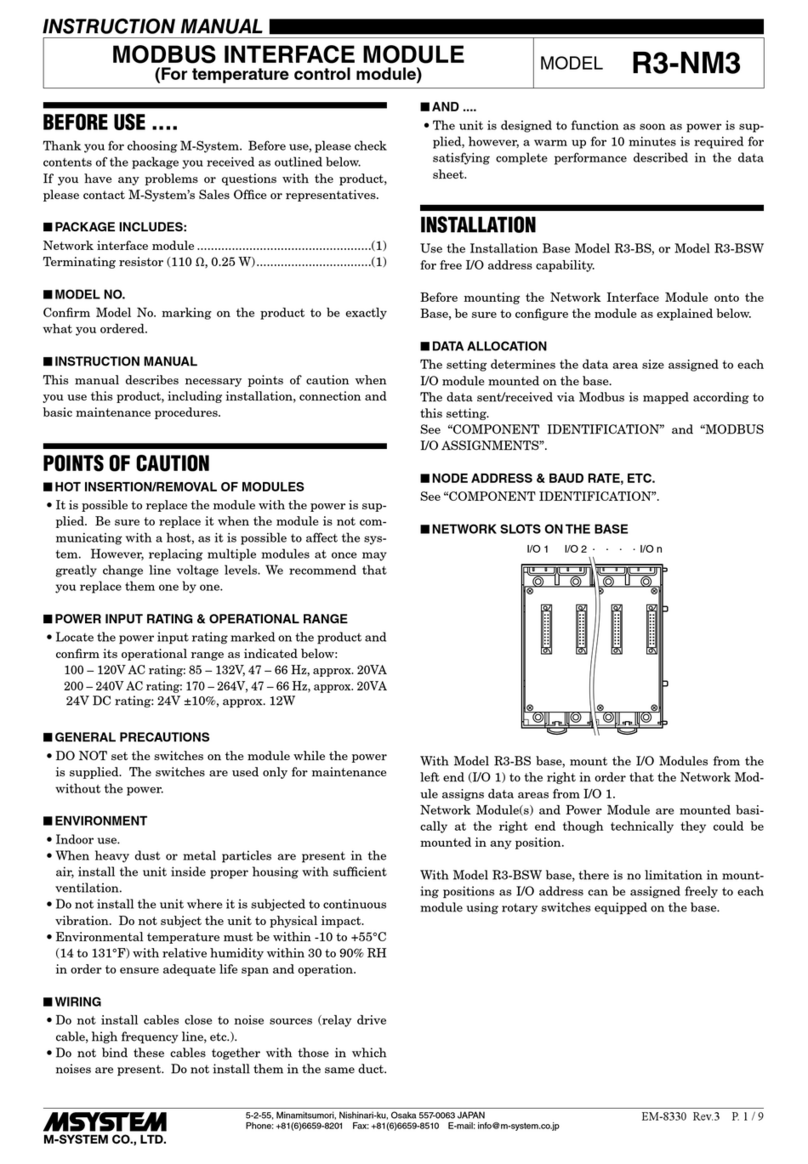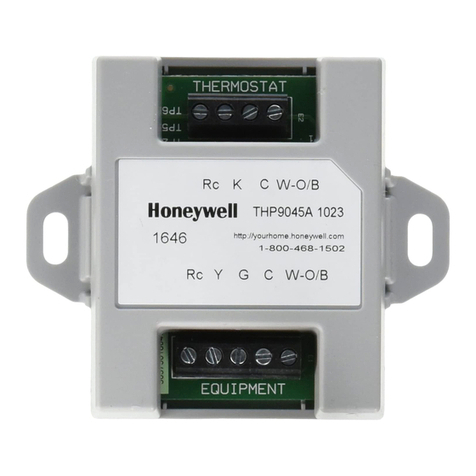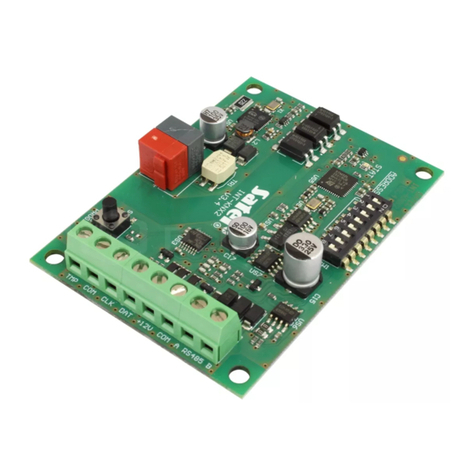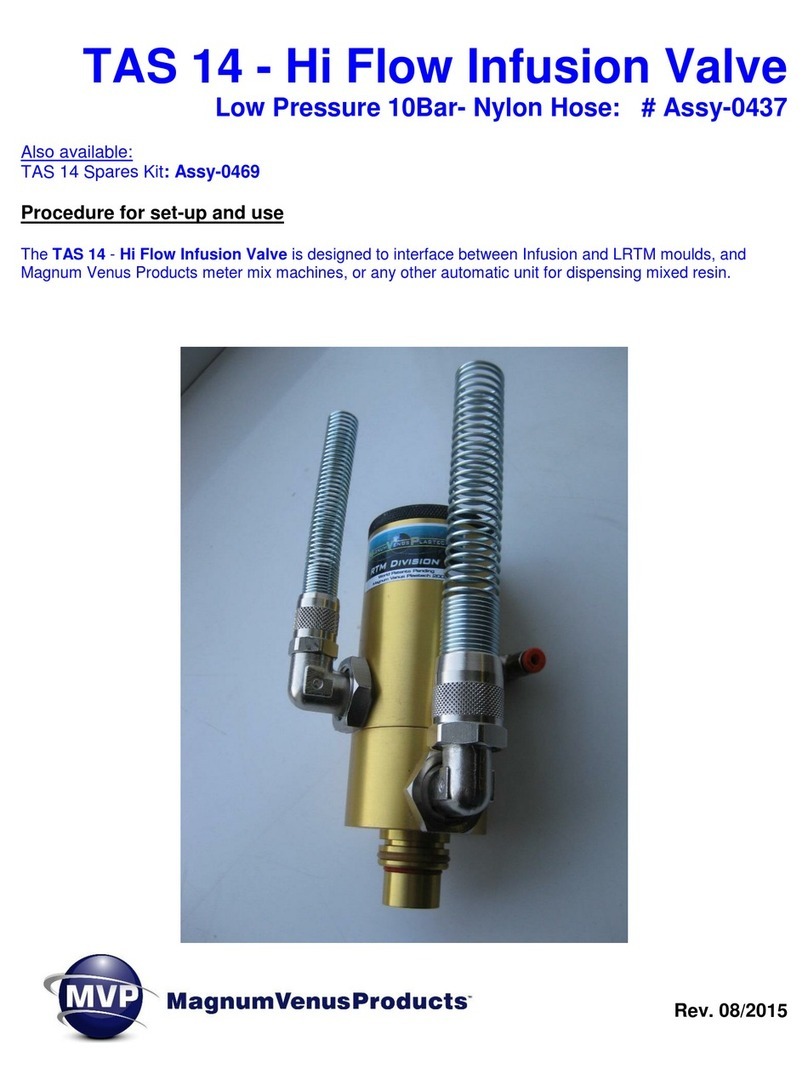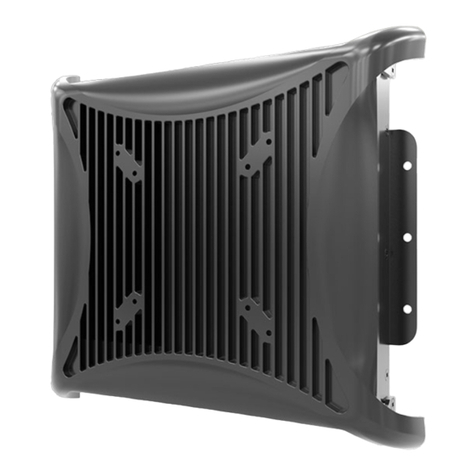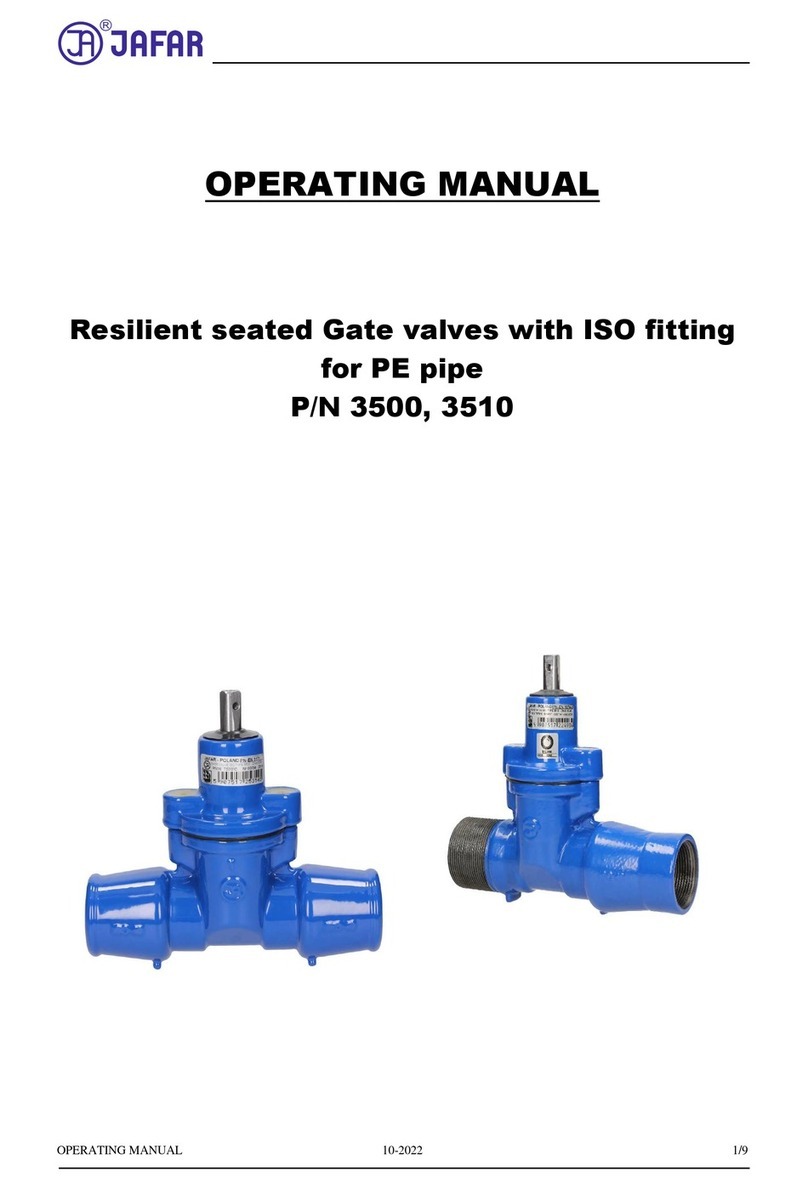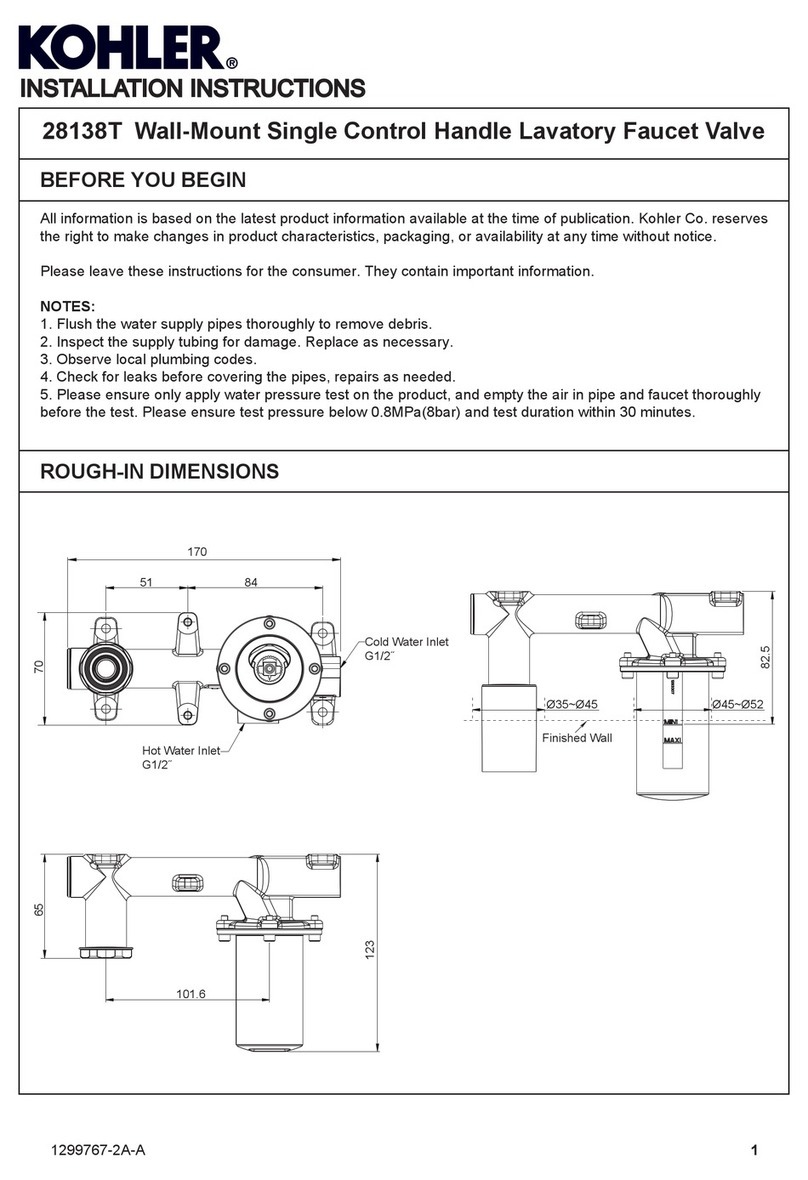Linx Technologies RXM-900-HP3 Guide

HP SERIES-3 RECEIVER MODULE DESIGN GUIDE
APPLICATIONS INCLUDE:
€G eneral Wire E limination
€Wireless Data Transfer
€Wireless Analog / Audio
€Home / Industrial Automation
€Wireless Networks
€R emote C ontrol
€R emote Access
€R emote Monitoring / Telemetry
€Alarm / S ecurity S ys tems
€Long-R a nge R F ID
€ MIDI Links
€ Voice/Mus ic / Intercom Links
FEATURES:
€ 8P arallel/100 S erial (P S Vers ions)
Us er-S electable C hannels
€P recis ion F requency S ynthes iz ed
Architecture
€ SAW F ilter F or S uperior Out-of-B and
R ejection
€F M/F S K Demodulation F or O uts tanding
P erformance and Noise Immunity
€E xceptional S ensitivity (-100 dB m typical)
€Wide-R ange Analog C apability Including
Audio (50Hz-28kHz)
€ Trans parent S erial Data Output
(56K bps max.)
€Direct S erial Interface
€R eceive S ignal S trength (R S S I) and
P owerdown Lines
€C ost-E ffective
€P inned or S MD P ackaging
€Wide S upply R ange (2.8-13V DC )
€E xtended Temperature R ange
(-30°C to +85°C )
€No P roduction Tuning or E xternal R F
C omponents R equired (E xcept Antenna)
€C ompatible With P revious HP S eries
Modules
DE S C R IP TION:
The HP -3 R F receiver module is the third generation of the popular HP S eries and offers
complete compatibility and numerous enhancements over previous generations. Like its
predeces s ors, the HP -3 is designed for the cost-effective, high-performance wireless transfer
of analog or digital information in the popular 902-928MHz band. All HP -3 s eries modules
continue to feature eight parallel selectable channels but versions are also available which
add serial selection of 100 channels. To ensure reliable performance, the receiver employs
F M/F S K demodulation and an advanced dual-conversion microprocessor-controlled
synthesized architecture. T he receiver is pin- and footprint-compatible with all previous
generations but its overall phys ical size has been reduced. B oth S MD and pinned packages
are now available. W hen paired with an HP -3 transmitter, a reliable link is created for
transferring analog and digital information up to 1000 ft. (under optimal conditions). Like all
Linx modules, the HP -3 requires no tuning or additional R F components (except an antenna),
making integration s traightforward even for engineers without prior R F experience.
P A R T # DE S C R IP T ION
R X M-900-HP 3-P P O HP -3 R eceiver (P INNE D 8 C H only)
R X M-900-HP 3-P P S HP -3 R eceiver (P INNE D 8p /100s C H)
R XM-900-HP 3-S P O HP -3 R eceiver (S MD 8 C H only)
R XM-900-HP 3-S P S HP -3 R eceiver (S MD 8p /100s C H)
MDE V-900-HP 3-P P S Development K it 900MHz (P inned P kg.)
MDE V-900-HP 3-S P S Development K it 900MHz (S MD P kg.)
ORDERING INFORMATION
H
IGH
-P
ERFORMANCE
RF MODULE
RXM-900-HP3
R evised 6/10/03

Parameter Designation Min. Typical Max. Units Notes
POWER SUPPLY
Input Voltage VCC 2.8 – 13.0 VDC –
Supply Current ICC 16 19 21 mA 1
Power-Down Current IPDN –5.610
µ
A–
RECEIVE SECTION
Receive Frequency Range FC902.62 – 927.62 MHz 4
Channel Spacing – 250 – kHz 4
Center Frequency Accuracy -50 +50 kHz
First IF Frequency – 34.7 – MHz –
Second IF Frequency – 10.7 – MHz –
Noise Bandwidth N3DB – 280 – kHz –
Data Bandwidth 100 – 56,000 Bps –
Analog/Audio Bandwidth 50 – 28,000 Hz –
Analog/Audio Output Level 0.8 1.1 2.0 Vac 5
Data output:
Logic low GND – 0.5 VDC 2
Logic high VCC-.3 – VCC VDC 2
Data Output Impedance – 17 – kOhms –
Data Output Source Current – 230 –
µ
A3
Receiver Sensitivity -94 -100 -107 dBm 6,7,8
RSSI:
Dynamic Range 60 70 80 dB –
Gain – 24 – mV/dB –
Voltage/No Carrier – – 1.6 V –
Spurious Emissions – -57 – dBm –
Interference Rejection:
FC±1MHz – 54 – dB –
FC±5MHz –57–dB–
ANTENNA PORT
RF input impedance RIN –50–Ohms –
TIMING
Max time between transitions T1––20mSec 10
Max Channel-ChangeTime T2––1.5mSec 10
Receiver Turn-on Time (Via PDN) T3––3mSec 10
Receiver Turn-on Time (Via Vcc)T
4––7mSec 10
ENVIRONMENTAL
Operational Temperature -30 +85 °C
Page 2
SPECIFICATIONS
1. Over entire operating voltage range
2. No load
3. With 1-volt output drop
4. Serial Mode
5. With 1kHz Sine @ 115kHz transmitter deviation
6. For 10-5 @ 9,600 BPS
7. At specified center frequency
8. Units are not rejected for better than maximum sensitivity
9. Minimum input power level to ensure that data output can hold a DC level
10. See page 14
Figure 1: Specifications Table
Notes:
ABOUT THESE MEASUREMENTS
The performance parameters listed below are based on module operation at
25°C from a 5V DC supply unless otherwise noted.

Page 3
Absolute Maximum Ratings:
Supply voltage Vcc -0.3 to 13 VDC
Voltage on any digital input pin
(regardless of supply) -0.3 to 13 VDC
Maximum RF input power +10 dB
Operating temperature -30°C to +85°C
Storage temperature -45°C to +85°C
Soldering temperature +260°C for 15 sec.
Figure 5: Worst Case RSSI Response Time
Figure 3: RX Enabled to Valid Data
Figure 6: BER vs. Input Power (typical)
10-6
10-5
10-4
10-3
-92 -93 -94 -95 -96 -97 -98 -99 -100 -101 -102
BER
PIN (dBm)
Figure 4: Receiver RSSI
TYPICAL PERFORMANCE GRAPHS
*NOTE* Exceeding any of the limits of this section may lead to permanent damage to the device.
Furthermore, extended operation at these maximum ratings may reduce the life of this device.
PON
Data Out
*CAUTION*
This product incorporates static-sensitive components. Always wear
an ESD wrist strap and observe proper ESD handling procedures
when working with this device. Failure to observe this precaution may
result in module damage or failure.
Figure 2: Maximum Ratings Table
PDN
RX Data
RX Off
RX On >-35dBm

Page 4
PIN# Name Equivalent CTK Description
50-ohm RF Input
Analog Ground
No Connection
RF Input/
Antenna Input
Gnd
RF In
Channel Select 0CS0 CS0
Channel Select 1 /
Serial Select Clock
CS1 /
SS Clock CS1
Channel Select 2 /
Serial Select Data
Received Signal
Strength Indicator
Mode Select
Voltage Input 2.8-13V
1V p-p Analog Output
Digital Data Output
N/C
Power Down
(Active Low)
CS2 /
SS Data CS2
PDN
RSSI RSSI
Gnd/Mode
VCC
Analog Out
Data Out
SMD (Only) No Connection
N/C
1
2-8
9
10
11
12
13
14
15
16
17
18
19-36
50Ω
4.7K
VIN
PDN
470K
VIN
25K
25K
25K
25K
µ
µ
µ
µ
PIN DESCRIPTIONS
Figure 7: Pin Functions and Equivalent Circuits
It is recommended all ground pins be connected to the groundplane. Pins
marked N/C have no physical connection, and are designed only to add support.

Page 5
The receiver is available in two package styles. The pinned SIP style is designed
for through-hole application and has 18 pins spaced at 0.1" intervals. Pin 1 is on
the far left of the board when viewed from the front. The package may be
inserted at right angles or bent to lie down (with the cover facing up) on the PCB.
Avoid repeated bending of the pins as they will weaken and may break.
The surface mount version is housed in a 36-pad hybrid SMD package which
has been designed to facilitate both hand and automated assembly. Castellation
grooves have been provided for ease of hand soldering and inspection. Pin 1 is
on the lower left when viewed as shown above.
PHYSICAL PACKAGING
RECOMMENDED PAD LAYOUT
The following drawings illustrate the recommended circuit-board footprints for
the HP-3 series receiver modules. The ground plane layer is also an essential
part of good layout. Be sure to review the physical layout recommendations and
antenna guidelines contained elsewhere in this design guide.
0.750"
0.090"
0.100"
0.065"
.060" .10"
.060"
.030" Dia. Finished
Figure 9: Suggested PCB Footprint
Surface-Mount ReceiverPinned Receiver
Figure 8: Receiver Physical Package
ENCAPSULATION NOTICE
In some applications the designer may wish to encapsulate the product's
circuit board. Among the common reasons for doing so are environmental
protection and security. The dielectric constant of encapsulation and potting
materials varies and can adversely affect receiver performance. For this
reason Linx does not recommend the encapsulation of our products and doing
so will void all product warranties. It should be noted, however, that customers
have reported success with a variety of encapsulation materials and
techniques. Should you choose to encapsulate your product, careful testing
should be conducted to determine the suitability of the chosen material.
0.236"
1.94"
0.78"
LOT 10000
HP SERIES RF RECEIVER
RXM-900-HP3-PP*
0.190"
0.75"
1.95"
0.69"
LOT 10000
HP SERIES RF RECEIVER
RXM-900-HP3-SP*
1

Page 6
PRODUCTION CONSIDERATIONS
Pinned Receiver Hand Assembly
The SIP module pins may be hand or wave-soldered. The module should not be
subjected to reflow. Linx recommends wash-free manufacturing techniques. The
modules are wash-resistant, but are not hermetically sealed. If a wash is used,
a drying time, sufficient to allow the evaporation of any moisture which may have
migrated into the module, must be allowed prior to applying electrical power. If
the wash contains contaminants, receiver performance may be adversely
affected even after drying.
SMD Receiver Hand Assembly
The SMD version is housed in a hybrid
SMD package which has been designed
to support hand or automated reflow
techniques. The packages primary
mounting surface is 36 pads located on
the bottom of the module. Since these
pads are inaccessible during mounting,
plated castellations run up the sides of the
module to facilitate solder wicking. This
allows for very quick and efficient hand
soldering for prototyping and small
volume production.
If the recommended pad placement has been followed, the pad on the board will
extend slightly past the edge of the module. Touch both the PCB pad and the
module castellation with a fine soldering tip. Tack one module corner first, then
work around the remaining attachment points being careful not to exceed the
solder times listed below.
Care should be taken, especially when hand-soldering, not to use excessive
amounts of flux as it will wick under the module and potentially impair its function.
In many cases, no-clean solder is the best choice. The modules are wash-
resistant, but are not hermetically sealed. Linx recommends wash-free
manufacturing techniques. If a wash is used, a drying time, sufficient to allow any
moisture which may have migrated into the module to evaporate, must be
allowed prior to applying electrical power. If the wash contains contaminants,
receiver performance may be adversely affected even after drying.
Castellations
PCB Pads
Soldering Iron
Tip
Solder
Figure 10: Soldering Technique
Absolute Maximum Solder Times
Hand-Solder Temp. TX +225°C for 10 Sec.
Hand-Solder Temp. RX +225°C for 10 Sec.
Recommended Solder Melting Point +180°C
Reflow Oven: +220° Max. (See adjoining diagram)

Page 7
SMD RECEIVER AUTOMATED ASSEMBLY GUIDELINES
For high-volume assembly, most users will want to auto-place the modules. The
modules have been designed to maintain compatibility with most pick-and-place
equipment, however, due to the module's hybrid nature certain aspects of the
automated assembly process are far more critical than for other component
types.
Following are brief discussions of the three primary areas where caution must be
observed.
Reflow Temperature Profile
The single most critical stage in the automated assembly process is the reflow
process. The reflow profile below should not be exceeded since excessive
temperatures or transport times during reflow will irreparably damage the
modules. Assembly personnel will need to pay careful attention to the oven's
profile to ensure that it meets the requirements necessary to successfully reflow
all components while remaining within the limits mandated by the modules
themselves.
Shock During Reflow Transport
Since some internal module components may reflow along with the components
placed on the board being assembled, it is imperative that the module not be
subjected to shock or vibration during the time solder is liquidus.
Washability
The modules are wash-resistant, but are not hermetically sealed. Linx
recommends wash-free manufacturing techniques, however, the modules can
be subjected to a wash cycle provided that a drying time is allowed prior to
applying electrical power to the parts. The drying time should be sufficient to
allow any moisture which may have migrated into the module to evaporate, thus
eliminating the potential for shorting damage during power-up or testing. If the
wash cycle contains contaminants, receiver performance may be adversely
affected, even after drying.
Figure 11: Maximum Reflow Profile
125°C
600
0
50
100
150
200
250
300
°C
120 180 240 300
30 90 150 210 270 330 360
180°C
210°C
220°C
Temperature
Time (Seconds)
Ideal Curve
Limit Curve
Forced Air Reflow Profile
1-1.5 Minutes
2-2.3 Minutes
Ramp-up
Preheat Zone
Cooling
Soak Zone
Reflow Zone
20-40 Sec.
2 Minutes Max.

The HP-3 is a high-performance multi-channel, dual-conversion superhet receiver
capable of recovering both analog (FM) and digital (FSK) information from a
matching HP transmitter. FM/FSK modulation offers significant advantages over
AM or OOK modulation methods including increased noise immunity and the
receiver's ability to "capture" in the presence of multiple signals. This is especially
helpful in crowded bands like those in which the HP-3 operates.
Let's take a brief look at each receiver section starting with the antenna. The
single-ended RF port is matched to 50 ohms to support commonly available
antennas such as those manufactured by Linx. The RF signal coming in from the
antenna is filtered by a Surface Acoustic Wave (SAW) filter to attenuate unwanted
RF energy (i.e., not in the 902-928MHz band). A SAW filter provides significantly
higher performance than other filter types such as an LC bandpass.
Once filtered, the signal is amplified by a Low-Noise Amplifier (LNA) to increase
the receiver sensitivity and lower the overall noise figure of the receiver. After the
LNA, the signal is mixed with a synthesized local oscillator operating 34.7MHz
below the incoming transmission frequency to produce the first Intermediate
Frequency (IF).
The second conversion and FM demodulation is achieved by a high-performance
IF strip which mixes the 34.7MHz first conversion frequency with 24.0MHz from a
precision crystal oscillator. The resulting second IF of 10.7MHz is then highly
amplified in preparation for demodulation.
Aquadrature demodulator is used to recover the baseband signal from the carrier.
The demodulated waveform is filtered, after which it closely resembles the original
signal. The signal is routed to the analog output pin and the data slicer stage,
which provides squared digital output via the data output pin. A key feature of the
HP-3 is the transparency of its digital output which does not impose balancing or
duty-cycle requirements within a range of 100 bps to 56Kbps.
An on-board micro-controller manages receiver functions and greatly simplifies
user interface. The micro-controller reads the channel-selection lines and
programs the on-board synthesizer. This frees the designer from complex
programming requirements and allows for manual or software channel selection.
The micro-controller also monitors incoming signal strength and squelches the
data output when the signal is not strong enough for accurate data detection.
Channel
Select
SAW BPF
VCO
PLL
{
4MHz
Int. Osc.
MODE
CS0
CS1
CS2
LNA
34.7M
BPF
10.7MHz
BPF
24MHz
Crystal
IF
Amp
10.7M
BPF 10.7M
Discriminator
Quad
RSSI
Digital
Data
Analog
Data
Limiter
Figure 12: HP Series-3 Receiver Block Diagram
THEORY OF OPERATION
Page 8

Page 9
BOARD LAYOUT CONSIDERATIONS
If you are familiar with RF you may be concerned about specialized layout
requirements. Fortunately, by adhering carefully to a few basic design and layout
rules, receiver integration is generally very straightforward.
Page 5 shows the suggested PCB footprint
for the HP Series-3 receiver. A
groundplane (as large as possible) should
be placed on a lower layer of your PC
board opposite the HP-3 receiver. This
groundplane can also be critical to the
performance of your antenna which will be
discussed later in the manual.
The HP-3 receiver should, as much as reasonably possible, be isolated from
other components on your PCB. Specifically, high-frequency circuitry such as
crystal oscillators should be kept as far away as possible from the HP-3 receiver.
If a pinned version of the receiver is to be mounted parallel to the board, it should
be laid over so that the plastic cover faces away from the PC board.
Do not route PCB traces directly under SMD-packaged versions. The underside
of the module has numerous signal-bearing traces and vias which could short or
couple to traces on the product's circuit board.
The trace from the receiver to the antenna should be kept as short as possible.
For runs greater than 1/4 inch use 50-ohm coax or a 50-ohm microstrip
transmission line as shown below. Handy software for calculating microstrip lines
is available on the Linx website (www.linxtechnologies.com).
Figure 14: Microstrip Formulas (Er = Dielectric constant of PCB material)
Effective
Dielectric Width/Height Dielectric Characteristic
Constant (W/d) Constant Impedance
4.8 1.8 3.59 50.0
423.07 51.0
2.55 3 2.12 48.0
Full groundplane on inner or lower board layer
Microstrip
Figure 13: Groundplane Treatment

Acommon method of reducing power consumption is to turn off the receiver via the PDN
pin and then wake it periodically to check for signal presence. During power-down the
module is completely shut down. In order to wake the receiver successfully, allowance
must be made for the start-up time requirements outlined elsewhere in this guide.
Remember the stated timing parameters assume a stable supply of 2.8 volts or
greater. They do not include the charging times of external capacitance on the
module's supply lines or the overhead of external software.
NOTE: WHEN PERIODICALLY POWERING-DOWN THE RECEIVER!
Page 10
POWER-UP SEQUENCE
As previously mentioned, the HP-3 is controlled by an on-board microprocessor.
When power is applied, the microprocessor executes the receiver start-up
sequence, after which the receiver is ready to receive valid data.
Figure 16 shows the start-up sequence. This
sequence is executed when power is applied
to the VCC pin or when the PDN pin is taken
high.
On power-up, the microprocessor reads the
external channel-selection lines and sets the
frequency synthesizer to the appropriate
channel. Once the frequency synthesizer has
stabilized, the receiver is ready to accept data.
The typical turn-on response time for an HP
Series-3 receiver is shown on page 3. The
response time was measured by connecting
the module's RF input to a signal generator
set to the proper channel frequency with an
output power of -92dBm and FM modulated
at 115kHz deviation with a 1kHz square wave.
The data output remains squelched until the
internal start-up procedure has been
executed.
POWER ON
Squelch Data
Output Pin
Determine Mode
Program Freq. Synth
To Default CH. 50
Read Channel
Selection Inputs
Crystal Oscillator
Begins to Operate
Program Frequency
Synthesizer
Ready for
Serial Data Input
Crystal Oscillator
Begins to Work
Determine Squelch
State Data Output Pin
Cycle Here Until More
Data Input
or Mode Change
Determine Squelch
State Data Output Pin
Cycle Here Until
Channel
or Mode Change
Serial ModeParallel Mode
POWER SUPPLY
The user must provide a clean source of power
to the receiver to ensure proper operation.
Supply noise will reduce receiver sensitivity.
The HP-3 incorporates a precision low-dropout
regulator on-board which allows operation over
an input voltage range of 2.8 to 13 volts DC.
Figure 15, shows a typical supply filter. This
filter should be placed close to the module's
supply lines. Its actual values will depend on the
type and frequency of noise present in the user's product.
The HP-3 can be put into an ultra-low-current (<10µA) power-down mode by
holding the PDN pin low. In power-down mode, the receiver is completely shut
down. Thus, the RSSI circuit CANNOT be used to monitor for channel activity. If
the PDN pin is left open or held high, the receiver will be fully on.
Figure 15: Typical Supply Filter
.1µF>22µF
Vcc IN
Vcc to
module
Figure 16: Start-Up Sequence

CHANNEL SELECTION
Parallel Selection
All HP-3 receiver models feature eight
parallel selectable channels. Parallel
mode is selected by grounding the
mode pin. In this mode, channel
selection is determined by the logic
states of pins CS0-CS2 as shown in
Figure 17. In this table a "0"
represents ground and a "1" the positive supply. The on-board microprocessor
performs all PLL loading functions eliminating external programming and allowing
channel selection via DIP switches or a product's processor.
Serial Selection
In addition to the parallel mode, PS versions of the HP-3 also feature 100 serially
selectable channels. The serial mode is entered when the mode pin is left open
or held high. In this condition CS1 and CS2 become a synchronous serial port
with CS1 serving as the clock line and CS2 as the data line. The module is easily
programmed by sending and latching the binary number (0-100) of the desired
channel (see page 22 for channel selection table). With no additional effort the
module's on-board microprocessor handles the complex PLL loading functions.
The serial mode is
straightforward, however,
minimum timings and bit
order must be followed.
Loading is initiated by
taking the clock line high
and the data line low as
shown. The eight-bit
channel number is then
clocked in one bit at a time
with the LSB first.
Page 11
Figure 17: Parallel Channel Select Table
Variable Data
Note 3
Note 2
Note 1
12345678
T1
25µs
T2
5µs
T3
8µsT4
5µs
Data
Clock T0
1ms
(T0) Minimum time between packets or prior to data startup ................1mS min.
(T1) Data-LO/Clock-HI to Data-LO/Clock-LO ...........................................25
µ
S min.
(T2) Clock-LO to Clock-HI ...........................................................................5
µ
S min.
(T3) Clock-HI to Clock-LO ...........................................................................8
µ
S min.
(T4) Data-HI/Clock-HI ...................................................................................5
µ
S min.
Total Packet Time.......................................................................................157
µ
S min.
1) Loading begins when clock line is high and data line is taken low.
2) Ensure that edge is fully risen prior to high-clock transition.
3) Both lines high - triggers automatic latch
Figure 18: PLL Serial Data Timing Table
There is no maximum time for this process, only the minimum times which must be
observed. After the eighth bit both the clock and data lines should be taken high to
trigger the automatic data latch. A typical software routine can complete the loading
sequence in under 200uS. A sample routine is available on the Linx website.
NOTE: When the module is powered up in the serial mode it will self program to channel
50 until programmed by user software. This allows testing apart from external
programming and prevents out-of-band operation. When programmed properly the dwell
time on this default channel can be less than 200uS. Channel 50 is not counted as a usable
channel since data errors may occur as transmitters also default to channel 50 on startup.
If a loading error occurs, such as a channel number >100 or a timing problem, the receiver
will default to serial channel 0. This is useful for debugging as it verifies serial port activity.
CS2 CS1 CS0 Channel Frequency
000 0 903.37
001 1 906.37
010 2 907.87
011 3 909.37
100 4 912.37
101 5 915.37
110 6 919.87
111 7 921.37

ANALOG OUTPUT
The HP-3 series is optimized for the transmission of serial data, however, it can
also be used very effectively to send a variety of analog signals including audio.
The ability of the HP-3 to send combinations of audio and data opens new areas
of opportunity for creative design.
The analog output is valid from 50 Hz to 28 kHz, providing an AC signal of about
1V peak-to-peak. This is a high impedance output and not suitable for directly
driving low-impedance loads, such as a speaker. In applications where a low
impedance load is to be driven a buffer circuit should always be used. For
example, in the case of a speaker, a simple op-amp circuit like the one shown
below can be used to act as an impedance converter.
The transmitter's modulation voltage is critical, since it determines the carrier
deviation and distortion. The transmitter input level should be adjusted to
achieve the optimum results for your application in your circuit. Please refer to
the transmitter data guide for full details.
When used for audio, the analog output of the receiver should be filtered and
buffered to obtain maximum sound quality. For voice, a 3-4kHz low-pass filter is
often employed. For broader-range sources such as music, a 12-17kHz cutoff
may be more appropriate. In applications which require high-quality audio, a
compandor may be used to further improve SNR. The HP-3 is capable of
providing audio quality comparable to a radio or intercom. For applications where
truly high fidelity audio is required, the HP-3 will probably not be the best choice
and a device optimized for audio should be utilized.
Page 12
HP Analog Out
10K
6
2
3+
-
4LM386
5
.05uF
1uF 250uF
10
4-12V
Figure 19: Audio Buffer Amplifier
THE DATA OUTPUT
The data output pin provides recovered digital data. It is an open collector output
with an internal 4.7K pull-up. When an RF transmission is not present, or when
the received signal strength is too low to ensure proper demodulation, the data
output is squelched continuous high. This feature supports direct operation with
UARTs which require their input to be continuously marking (or high). An HP-3
transmitter and receiver can be directly connected between two UARTs without
the need for buffering or logical inversion. It should be noted that the squelch
level is set just over the receiver's internal noise threshold. Any external RF
activity above that threshold will "break squelch" and produce hashing on the
data output. While the data output will be reliably squelched in low-noise
environments, the designer should always plan for the potential of hashing.

Figure 21: Typical Application - RS-232 Interface
ANTENNA
GND
GND
GND
GND
GND
GND
GND
N/C
CS0
CS1 / SS CLOCK
CS2 / SS DATA
POWER DOWN
RSSI
GND/MODE
VCC
ANALOG
DATA OUT
1
2
3
4
5
6
7
8
9
10
11
12
13
14
15
16
17
18
7
16
+
+
+
+
+C1
4.7 uF
C4
4.7 uF
C2
4.7 uF
C3
4.7 uF
C5
220 uF
Channel
Select
RX1
3 Position
DIP Switch
10
1
3
4
5
6
2
15
2
J1
DB-9F
U2
MAX 232
5
ANTENNA
GND
GND
GND
GND
GND
GND
GND
N/C
CSO
CS1 / SS CLOCK
CS2 / SS DATA
POWER DOWN
RSSI
GND/MODE
VCC
ANALOG
DATA OUT
1
2
3
4
5
6
7
8
9
10
11
12
13
14
15
16
17
18
1
2
3
4
5
6
7
8
9
D0
D1
D2
D3
VT
DIN
OSC1
OSC2
GND
VCC
A7
A6
A5
A4
A3
A2
A1
A0
18
17
16
15
14
13
12
11
10
Channel
Select
RX1
S1
3-Position
DIP Switch
Output
to User
U2
HT694 S2
8-Position
DIP Switch
Address Select
390K
Page 13
Figure 20: Typical Application - Remote-Control Receiver
DATA CONSIDERATIONS
Once an RF link has been established, the challenge becomes how to effectively
transfer information across it. For simple control or status signals such as button
presses or switch closures, consider using an encoder and decoder IC set.
These chips are available from several manufacturers including Linx, Microchip,
Holtek, and Motorola. These chips take care of all encoding, error checking, and
decoding functions. They generally provide a number of inputs to which switches
can be directly connected, and address or security bits to prevent unintentional
activation. These IC's are an excellent way to avoid protocol development and
bring basic remote control/status products quickly and inexpensively to market.
In most applications the modules will be interfaced to a microprocessor. A UART
may be employed or an output pin of the microprocessor "bit-banged" to create
a data stream. While many RF solutions impose complex formatting and
balancing requirements, the HP-3 series was designed to be as transparent as
possible. The HP-3 does not encode or packetize the data in any manner. This
transparency gives the designer tremendous flexibility in the structure of a
protocol. Of course the performance and reliability of the link are dependent on
the quality of external software and hardware. To properly apply the receiver, it
is critical to understand the differences between a wired and a wireless
environment. At each point in the system there are timing and data-corruption
issues that should be understood and accounted for. The following section
provides a brief overview of these issues.

Page 14
PROTOCOL CONSIDERATIONS
As previously indicated, the module's transparency allows for virtually unlimited
protocol types and techniques. This section is meant only to illustrate general
issues a designer should address to ensure product reliability in the field. Your
application may call for or benefit from an entirely different protocol structure.
It is a good idea to structure the data being sent into small packets so that errors
can be managed without affecting large amounts of data. Packets should be
transmitted without space between bytes. When using a UART the following
packet format is often followed:
[ uart sync-byte ] [ start-byte ] [ data-packet ]
The UART sync-byte is used to ensure that the start-bit for the start-byte will be
correctly detected. It is a single byte with a value of 255 (0FF hex). A start-byte
often follows the sync-byte to intelligently qualify the data-packet which will
follow. Detection of the start-byte would be performed by the computer or
microcontroller connected to the receiver.
TIMING CONSIDERATIONS
There are four major timing considerations the engineer must be aware of when
designing with the HP-3 Series receiver. These are shown in the table below.
T1 is the maximum amount of time that can elapse without a data transition. Data
must always be considered in both the analog and the digital domain. Because the
data stream is asynchronous and no particular format is imposed, it is possible for
the data to meet the receiver's baud-rate requirement yet violate the analog
frequency parameters. For example, if a 255 (0FF hex) were sent continuously the
receiver would view the data as a DC level. The receiver would hold that level until
a transition was required to meet the minimum frequency requirement. If no
transition occurred, data integrity could not be guaranteed. Thus, while no
particular structure or balancing requirement is imposed, the designer must ensure
that both analog and digital signals meet the required transition specification.
T2 is the worst-case time needed for a powered-up module to switch between
channels after a valid channel selection. This time does not include external
overhead for loading a desired channel in the serial channel-selection mode.
T3 is the time to receiver-readiness from the PDN pin going high. Receiver readiness
is determined by valid data at the RXDATA pin. (This assumes an incoming data
stream and the presence of stable supply on Vcc pin).
T4 is the time to receiver-readiness from the application of Vcc. Receiver readiness is
determined by valid data at the RXDATA pin. (This assumes an incoming data
stream and the PDN pin is high or open).
Parameter Description Max.
T1Max time between 20mSec
data output transitions
T2Max Channel-Change Time 1.5mSec
(Time to Valid Data)
T3Receiver Turn-on Time (Via PDN) 3mSec
T4Receiver Turn-on Time (Via VCC) 7mSec

Page 15
PROTOCOL CONSIDERATIONS (CONT.)
The procedure here is protocol-dependent, but to illustrate let's consider the
packet format outlined above being sent to a UART. A UART interprets the
start-bit of a byte as a 1-0 transition. When the incoming data is 101010, or
hash, it is hard to actually find the start bit. This problem is solved by the
UART sync-byte. The purpose of the sync-byte is to create a high marking
period of at least a byte-length so that the start bit of the following start-byte
can be correctly recognized.
The start-byte is used by the receiving computer or microcontroller to
intelligently identify the beginning of a data packet. The start-byte value
should be chosen so that it does not appear in the data stream. Otherwise,
a receiver may "wake up" in the middle of a packet and interpret data in the
packet as a valid start-byte . There are many other ways to organize
protocol if this proves impractical.
There is always a possibility of bursting errors from interference or changing
signal conditions causing corruption of the data packet, so some form of
error checking should be employed. A simple checksum or CRC could be
used. Once an error is detected the protocol designer may wish to simply
discard the corrupt data or develop a scheme for correcting it or requesting
its retransmission.
INTERFERENCE CONSIDERATIONS
It must be recognized that many bands are widely used, and the potential
for conflict with other unwanted sources of RF is very real. All RF products
are at risk from interference but its effects can be minimized by better
understanding its characteristics.
Interference can manifest itself in many ways. Low-level interference will
produce noise and hashing on the output and reduce the link's overall
range. Thanks to the capture properties of an FM system, the receiver will
still function when an intended signal is present at a higher level than the
interference.
Another type of interference can be caused by higher-powered devices such
as hopping spread-spectrum devices. Since these devices move rapidly
from frequency to frequency they will usually cause short, intense losses of
information. Such errors are referred to as bursting errors and will generally
be dealt with through protocol.
High-level interference is caused by products sharing the same frequency
or from near-band high-power devices. Fortunately, this type of interference
is less common than those mentioned previously, but in severe cases can
prevent all useful function of the affected device. It is in these cases that the
frequency agility offered by the HP is especially useful.
Although technically it is not interference, multipath is also a factor to be
understood. Multipath is a term used to refer to the signal cancellation
effects that occur when RF waves arrive at the receiver in different phase
relationships. This is particularly a factor in interior environments where
objects provide many different reflection paths. Multipath results in lowered
signal levels at the receiver and thus shorter useful distances for the link.

RSSI OUTPUT
HP-3 Series receivers are equipped with Received-Signal-Strength-Indication
(RSSI). The RSSI output is a DC voltage proportional to the incoming signal
strength. The output has many valuable uses including interference assessment,
signal strength indication, external squelching, and transmitter presence
indication.The RSSI circuit has a voltage range of about 800mV to 2.5V and a
dynamic signal range of greater than 60dB.
Figure 4 on page 3 shows the RSSI output versus input signal strength. This
graph is a characterization only. The RSSI response and level vary from module
to module. For many applications this slight variation is acceptable but when
highly accurate measurement of the incoming signal strength is required your
product must be calibrated on a receiver-by-receiver basis.
Figure 5 on page 3 shows the worst case RSSI response time. This graph shows
how long it takes the RSSI voltage leval without RF present to respond to an
incomi
8 CH only
ng signal. The RSSI pin can also be used for demodulation of AM or
OOK modulated carriers.
Aspectrum analyzer is the primary tool of the RF engineer for assessing
interference sources and levels, but is complex and costly. Fortunately, the RSSI
voltage output can also be used to determine the presence and strength of
interference during the development process or for display to the end user.
Page 16
RECEIVER SENSITIVITY
The sensitivity of a receiver is
critical to the overall range-
performance of a wireless
link. A sensitivity specification
is almost meaningless unless
accompanied by a bit-error-
rate (BER). Receiver sensi-
tivity is often measured using
a pseudo-random bitstream
generated by a bit-error-rate-
tester (BERT). A typical
receiver sensitivity test setup is shown in Figure 22.
Apath loss model can be used to show that the open field range of a FCC-
compliant link can exceed 1,000 feet. The actual ability of a product to attain this
range-performance depends on many factors including:
1) Transmitter characteristics
2) Quality of receiving antenna
3) Actual operating environment (open field, inter-building, city, etc.)
4) Ambient RF conditions / Interference level
5) Protocol structure / Data rate
6) Quality of layout / Level of circuit and power supply noise
The HP-3 development kit contains two development boards that can be used to
evaluate the HP-3's range-performance. If you have any difficulties attaining the
same range with your own product, you should carefully review all Linx
documentation for ideas of what the problem might be. If all else fails, contact
Linx and discuss your design with an application engineer.
Figure 22: Sensitivity Test Setup
RF
IN
RF Out
EXT 1
Data
Out
HP Receiver
Under Test
Phoenix 5500
BER Tester
Hewlett Packard ES-3000
Signal Generator
RxD
IN
TXD OUT

Page 17
GENERAL ANTENNA RULES
The following general rules should help in maximizing antenna performance:
1. Proximity to objects such as a user's hand or body, or metal objects will
cause an antenna to detune. For this reason the antenna shaft and tip
should be positioned as far away from such objects as possible.
2. Optimum performance will be obtained from a 1/4- or 1/2-wave straight whip
mounted at a right angle to the groundplane. In many cases, this isn't
desirable for practical or ergonomic reasons; thus, an alternative antenna
style such as a helical, loop, patch, or base-loaded whip may be utilized and
the corresponding sacrifice in performance accepted.
3. If an internal antenna is used, keep it away from other metal components,
particularly large items like transformers, batteries, and PCB tracks and
groundplanes. In many cases, the space around the antenna is as important
as the antenna itself.
4. In many antenna designs, particularly 1/4-wave whips,
the groundplane acts as a counterpoise, forming, in
essence, a 1/2-wave dipole. For this reason adequate
groundplane area is essential. The groundplane can
be a metal case or ground-fill on the circuit board.
Ideally, the groundplane to be used as counterpoise
should have a surface area ≥ the overall length of the
1/4-wave radiating element and be oriented at a 90°
angle. Such an orientation is often not practical due to
size and configuration constraints. In
these instances a designer must
make the best use of the area
available to create as much
groundplane in proximity to the base
of the antenna as possible. In
instances where the antenna is
remotely located or the antenna is
not in close proximity to a circuit
board plane or grounded metal case,
a small metal plate may be fabricated
to maximize antenna performance.
5. Remove the antenna as far as possible from potential interference sources
such as switching power supplies, oscillators, motors and relays.
Remember, the single best weapon against such problems is attention to
placement and layout. Filter the module's power supply with a high-
frequency bypass capacitor. Place adequate groundplane under all
potential sources of noise. Shield noisy board areas whenever practical.
6. In some applications it is advantageous to place the receiver and its
antenna away from the main equipment. This avoids interference problems
and allows the antenna to be oriented for optimum RF performance. Always
use 50Ω coax such as RG-174 for the remote feed.
I
EDIPOLE
ELEMENT
GROUND
PLANE
VIRTUAL λ/4
DIPOLE λ/4
λ/4
VERTICAL λ/4 GROUNDED
ANTENNA (MARCONI)
OPTIMUM
USEABLE NOT RECOMMENDED
NUT GROUNDPLANE
(MAY BE NEEDED)
CASE
Figure 23: Antenna Orientations

ANTENNA CONSIDERATIONS
The choice of antennas is one of the
most critical and often overlooked
design considerations. The range,
performance, and legality of the
receiver is critically dependent on the
antenna utilized. While adequate
antenna performance can often be
obtained by trial and error methods,
professionally designed antennas,
such as those offered by Linx, can
provide superior performance,
repeatability and legal compliance.
For complete details on the Linx antenna line, visit the Linx website at
www.linxtechnologies.com, or call (800)736-6677.
The following sections look at some of the basic considerations involved in the
design and selection of antennas. For a more comprehensive discussion please
refer to Linx applications note #00500 "Antennas: Design, Application,
Performance".
Page 18
ANTENNA SHARING
In cases where a transmitter and receiver
module are combined to form a transceiver
it is often advantageous to share a single
antenna. To accomplish this an antenna
switch must be used to provide isolation
between the modules. There is a wide
variety of antenna switches available
which are cost-effective and straight-
forward to use. Among the most popular
are switches from Alpha and NEC. Look
for an antenna switch that has high
isolation and low loss at the desired
frequency of operation. Generally, the TX or RX status of a switch will be
controlled by a product's microprocessor, but selection may also be made
manually by the user. In some cases where the characteristics of the TX and RX
antennas need to be different or switch losses are unacceptable it may be more
appropriate to utilize two discrete antennas.
Antenna
Transmitter
Module
Receiver
Module
0.1µF
0.1µF
0.1µF
0.1µF
0.1µF
GND
GND
VDD
Select
Figure 25: Typical Antenna Switch
CONNECTOR OPTIONS
The FCC requires that antennas
designed for use on Part 15 products
be either permanently attached, or
utilize a unique and proprietary
connector not available to the
general public. In cases where the
antenna needs to be removable,
Linx offers a full line of connectors
designed to comply with these
requirements.
Figure 23: Linx Antennas
Figure 24: Linx Connectors

Page 19
Specialty Styles
Whip Style
Loop Style
1/4-wave wire length
frequencies:
433MHz = 6.5"
868MHz = 3.24"
902-928MHz = 3.06"
COMMON ANTENNA STYLES
The antenna is a critical and often overlooked component which has a significant
effect on the overall range, performance and legality of an RF link. There are
hundreds of antenna styles that can be successfully employed with the HP-3
Series. Following is a brief discussion of the most commonly utilized styles.
Awhip-style monopole antenna provides outstanding overall
performance and stability. A low-cost whip can be easily
fabricated from wire or rod, but most product designers opt for
the consistent performance and cosmetic appeal of a
professionally made model. To meet this need, Linx offers a
wide variety of straight and reduced-height whip-style antennas
in permanent and connectorized mounting styles.
The wavelength of the operational frequency determines an
antenna's overall length. Since a full wavelength is often quite
long, a partial 1/4-wave antenna is normally employed. Its size
and natural radiation resistance make it well-matched to Linx
modules. The approximate length for a straight 1/4-wave
antenna can be easily found using the formula below. It is also
possible to reduce the overall height of the antenna by using a
helical winding; therefore, the physical appearance is not always
an indicator of the antenna's frequency.
Linx offers a wide variety of specialized antenna styles and
variations. Many of these styles utilize helical elements to
reduce the overall antenna size while maintaining reasonable
performance. A helical antenna's bandwidth is often quite
narrow and the antenna can detune in proximity to other objects,
so care must be exercised in layout and placement.
Aloop- or trace-style antenna is normally printed directly on a
product's PCB. The element can be made self-resonant or
externally resonated with discrete components but its actual
layout is product specific. Despite its cost advantages, PCB
antenna styles are generally inefficient and are very sensitive to
changes in layout or substrate. In addition, printed styles are
difficult to engineer, requiring the use of expensive equipment
including a network analyzer. An improperly designed loop will
have a high SWR at the desired frequency which can introduce
instability in the RF stages.
Linx offers low-cost planar and chip antennas which mount
directly to a product's PCB. These tiny antennas do not require
testing and provide excellent performance in light of their
compact size. They offer a preferable alternative to the often
problematic "printed" antenna.
L =
234
F
MHz
234 = .255
.255 x 12" = 3.06"
916MHz
Where:
L=length in feet of quarter-wavelength
F=operating frequency in megahertz
Example:

Page 20
LEGAL CONSIDERATIONS
When working with RF, a clear distinction must be made between what is technically
possible and what is legally acceptable in the country where operation is intended.
Many manufacturers have avoided incorporating RF into their products as a result of
uncertainty and even fear of the approval and certification process. Here at Linx our
desire is not only to expedite the design process, but also to assist you in achieving
a clear idea of what is involved in obtaining the necessary approvals to legally market
your completed product.
In the United States the approval process is actually quite straightforward. The
regulations governing RF devices and the enforcement of them are the responsibility
of the Federal Communications Commission (FCC). The regulations are contained in
the Code of Federal Regulations (CFR), Title 47. Title 47 is made up of numerous
volumes; however, all regulations applicable to this module are contained in volume
0-19. It is strongly recommended that a copy be obtained from the Government
Printing Office in Washington, or from your local government book store. Excerpts of
applicable sections are included with Linx evaluation kits or may be obtained from the
Linx Technologies web site (www.linxtechnologies.com). In brief, these rules require
that any device which intentionally radiates RF energy be approved, that is, tested,
for compliance and issued a unique identification number. This is a relatively painless
process. Linx offers full EMC pre-compliance testing in our HP/Emco-equipped test
center. Final compliance testing is then performed by one of the many independent
testing laboratories across the country. Many labs can also provide other certifications
the product may require at the same time, such as UL, CLASS A/B, etc. Once your
completed product has passed, you will be issued an ID number which is then clearly
placed on each product manufactured.
Questions regarding interpretations of the Part 2 and Part-15 rules or measurement
procedures used to test intentional radiators, such as the HP-3 modules, for
compliance with the Part-15 technical standards, should be addressed to:
Federal Communications Commission
Equipment Authorization Division
Customer Service Branch, MS 1300F2
7435 Oakland Mills Road
Columbia, MD 21046
Tel: (301) 725-1585 / Fax: (301) 344-2050 E-Mail: [email protected]
International approvals are slightly more complex, although many modules are
designed to allow all international standards to be met. If you are considering the
export of your product abroad, you should contact Linx Technologies to determine the
specific suitability of the module to your application.
All Linx modules are designed with the approval process in mind and thus much of
the frustration that is typically experienced with a discrete design is eliminated.
Approval is still dependent on factors such as the choice of antennas, correct use of
the frequency selected, and physical layout. While some extra cost and design effort
are required to address these issues, the additional usefulness and profitability added
to a product by RF makes the effort more than worthwhile.
NOTE: HP-3 Series modules are intended to allow for full Part-15 compliance;
however, they are not approved by the FCC or any other agency worldwide. This
is because the module's performance and legality may be affected by external
factors specific to a user's application. The purchaser understands that testing
and approvals of a finished product may be required prior to the sale or operation
of the device, and agrees to utilize the component in keeping with all laws
governing their use in the country of operation.
This manual suits for next models
6
Table of contents
Other Linx Technologies Control Unit manuals
Popular Control Unit manuals by other brands
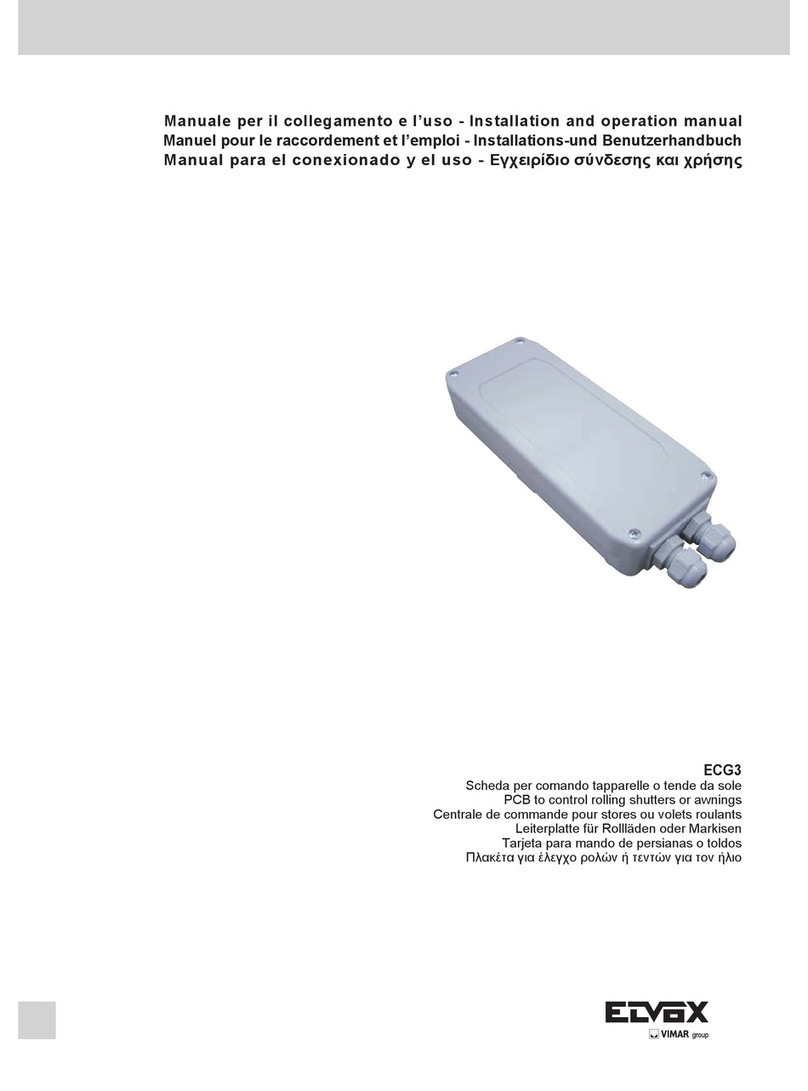
Elvox
Elvox ECG3 Installation and operation manual

BainUltra
BainUltra MIA Series user guide
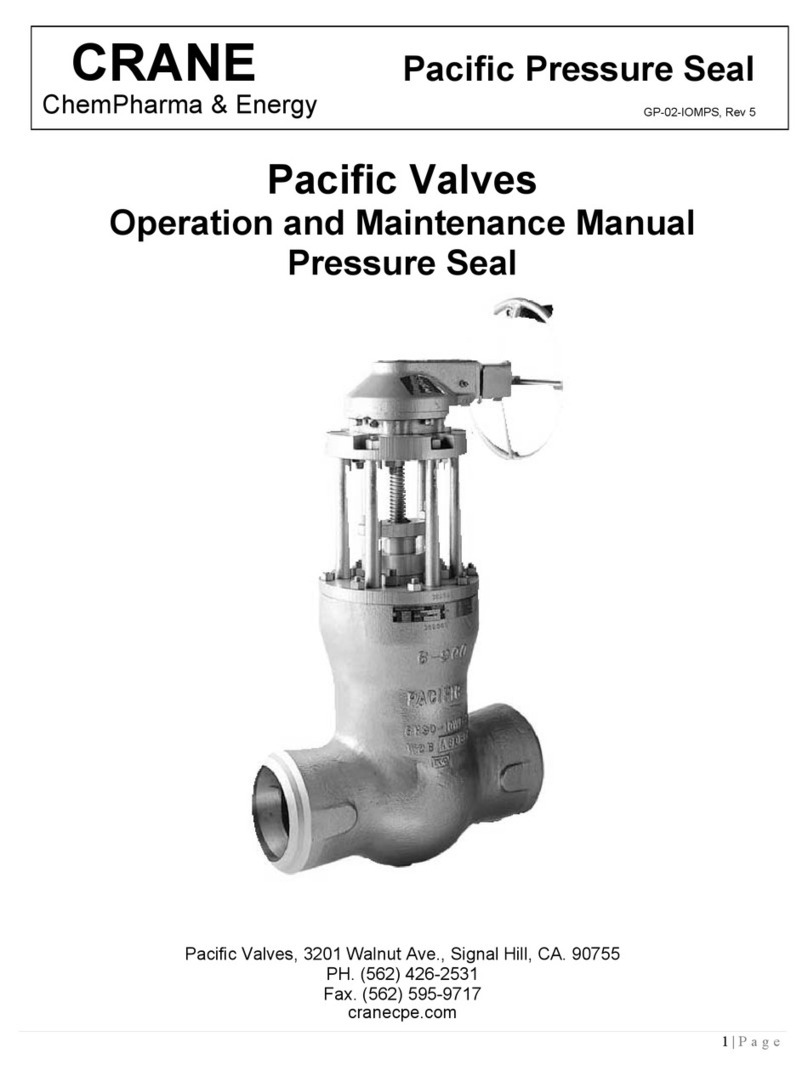
Crane
Crane Class 150 Operation and maintenance manual

Acromag
Acromag BusWorks XT Series user manual
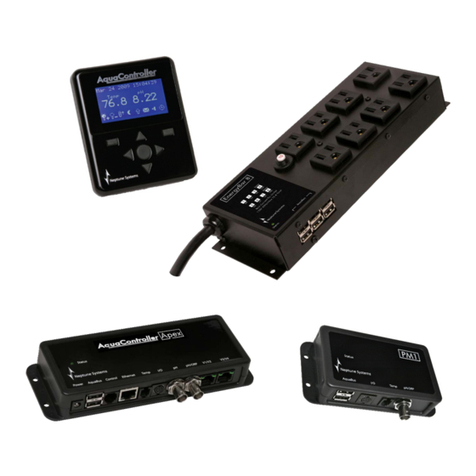
Neptune Systems
Neptune Systems AquaController Apex Classic Setup and Programming Guide

CALEFFI
CALEFFI 521201 NTR Installation and commissioning manual
